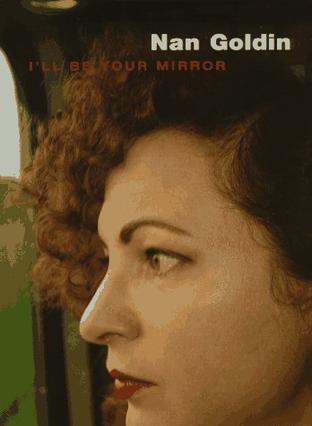欢迎来到相识电子书!
标签:Nan_Goldin
-
I'll Be Your Mirror
This large book (492 pages) documents some of the large body of work of photographer Nan Goldin, and was published on the occasion of a major exhibition of Goldin's work at the Whitney Museum of American Art. The photographs span more than two decades, starting from the early 1970s, documenting the lives of Goldin and her friends and acquaintances. Most were taken in Boston and New York City, with many also taken in other Massachusetts towns, Paris, Berlin, Tokyo and a few other locations. Goldin is maybe best known for her ever-evolving collection of photographs that she shows as a slide show called The Ballad of Sexual Dependency – also published as a book in 1986. Her work is unusual in its ordinariness; she captures herself and others at various points, often emotionally revealing, but rarely does she dramatize the events. The titles of the pictures convey much of the relevant information information: · Pat and Denise in the Profile Room, Boston, 1973. · Roommate in her chair, Boston, 1972. · Kenny putting on makeup, Boston, 1973. · Bruce bleaching his eyebrows, Pleasant St., Cambridge, 1975. · David and Bruce after sex, Provincetown, 1975. · Kenny with blue hair, Cambridge, 1978. · Bobby masturbating, NYC 1980. · Suzanne on the bidet, New Jersey, 1983. · Brian on the phone, NYC, 1981. · Self-portrait with Brian having sex, NYC, 1983. · Nan one month after being battered, 1984. · Tommy napping after acupuncture, Cambridge, 1989. · Cookie with Max at my birthday party, Provincetown, MA, 1976. · Cookie in her casket, NYC, November 15, 1989. · Fiona after breast surgery, NYC, 1991. · Siobhan at the Paramount Hotel, NYC, 1993. · Gilles and Gotscho embracing, Paris, 1992 · Gotscho at Johnny Lat's Gym, NYC, 1995. · Piotr with medication, Berlin, 1996. · Self-portrait by the lake, Skowhegan, Maine, 1996. These pictures document telling moments of ordinary people. Some of her friends are gay or lesbian, or transvestites, have AIDS, or at the margins of society in other ways, are included, maybe even centrally, in these pictures, but there's no sense here that these pictures are meant to tell the truth about people on the edges of society. It is true that her friends are neither traditional families living in the city suburbs or Midwestern cities, nor are they African-Americans living in the deep south; they are mostly non-wealthy unmarried whites living in urban centers, especially New York. But that's just Goldin's life, and she pictures people who matter to her. The book contains a number of excellent essays and interviews about or with Goldin, and many of them try to analyze what is distinctive about her work. For example, Joachim Sartorius writes, "Nan Goldin is not a documentary photographer. To think so—or to limit her to such a category—would be to misconstrue her work entirely. He work is about life itself: About the depths a person plumbs in time. Which explains her irresistible urge to photograph a person time and time again" (p. 322). Goldin herself says, "I don't believe in the portrait. I believe only in the accumulation of portraits as a representation of a person. Because I believe people are really complex" (p. 454). Goldin's lack of obvious style is disarming. Even when the moments she captures are unusual subjects, such as herself after she was battered by her partner, or drag queens performing, or friends of hers sitting on the twin toilets together, she gives little sense of drama to her picture. She seems to play down such possibilities, as if any stylistic quirk would get in the way of the picture. Her ability may even lie in her talent for making the extraordinary ordinary, not in the sense of robbing it of meaning, but in rather in of accepting everything she pictures. Even in the pictures of herself after her battering, there's little sense of outrage, either personal or political. Rather, there's just a need to record what happened, and maybe to show the friends who were with her at that time. That is not to say that Goldin's work in not political. Clearly any work that depicts people who play with or transgress traditional gender roles, the impact of domestic violence, and people with AIDS is inherently political. But her work is intensely personal. There's nothing artful, exhibitionistic or sensationalistic about this work, and it has no didactic message, and this is especially what distinguishes it from the work of other contemporary photographers such as Natasha Merritt or Chris Verene. Indeed, her photographs seem to resist interpretation, either psychological or political. Even when they are aesthetically pleasing, it takes one a while to notice the beauty. This subtlety is bemusing; one might even be tempted to ask what is so special about these pictures. But, speaking for myself at least, as a whole this collection of images is hugely impressive, maybe precisely because Goldin avoids simplistic messages and yet remains very connected with her subjects. This is deeply humanistic work without being saccharine and is a powerful articulation of a life. ——Ftn_Horns-ANAR——
热门标签
下载排行榜
- 1 梦的解析:最佳译本
- 2 李鸿章全传
- 3 淡定的智慧
- 4 心理操控术
- 5 哈佛口才课
- 6 俗世奇人
- 7 日瓦戈医生
- 8 笑死你的逻辑学
- 9 历史老师没教过的历史
- 10 1分钟和陌生人成为朋友

